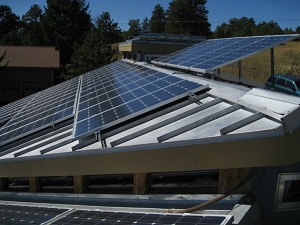Solar week roundup: China, Latin America pushing ahead with solar
 News in the world of solar is increasingly becoming worldwide. As the U.S. imposed preliminary duties on Chinese silicon photovoltaics, the top 10 solar producers are looking to increase the Asian PV market for more sales. At the same time interest in Latin and South America is picking up as costs for solar continue to come down and costs for other energy sources go up. In the U.S., the news is more mixed with some places embracing solar while others are trying to reduce incentives to support renewables. But even Minnesota could go 100 percent renewable at a small cost.
News in the world of solar is increasingly becoming worldwide. As the U.S. imposed preliminary duties on Chinese silicon photovoltaics, the top 10 solar producers are looking to increase the Asian PV market for more sales. At the same time interest in Latin and South America is picking up as costs for solar continue to come down and costs for other energy sources go up. In the U.S., the news is more mixed with some places embracing solar while others are trying to reduce incentives to support renewables. But even Minnesota could go 100 percent renewable at a small cost.
The top 10 PV manufacturers, including many from China, are increasingly looking more locally for sales, according to a new Lux Research report. The report found that although the market is currently flooded, with many PV manufacturers slowing down production, at least temporarily, demand is expected to start picking up by 2013—with Asia becoming a more significant player on the global stage. That demand will be driven by Japan, which is dramatically increasing the amount of solar it’s installing in wake of the Fukushima disasters last year.
That may also be a good thing for Chinese manufacturers in particular. Since the Commerce Department did decide to impose—at least on a preliminary basis—duties on Chinese PV. In the first of two complaints against Chinese PV manufacturers’ trade practices, the department instated small preliminary countervailing duties against the Chinese manufacturers.
Companies like Trina Solar will have to pay a 4.73 percent duty on their imports to the U.S. That number could go up or down. Trina Solar said it is committed to the U.S. solar market and will comply with the department’s duties.
South America’s largest country, Brazil, is considering legislation that could grow the amount of solar in the country.
The country is considering a national net-metering program for home and small business owners, to credit PV owners for generation. And it’s considering legislation that would slash taxes on utilities by 80 percent on electricity sourced from distributed solar generation.
The Inter-American Development Bank (IDB) increased financing for solar, renewable projects in Latin America to $736 million in 2011. That’s more than it invested over the decade between 2000 and 2010, when it invested more $663 million in renewable energy projects in Latin American and Caribbean countries. The IDB also plans to invest more than $700 million in such projects in 2012.
In the U.S. things are a bit choppier. A recent report from Institute for Energy and Environmental Research (IEER) contended it would cost up to about 2 cents per kilowatt hour for Minnesota to go 100% renewable. The report found that a combination of policies and infrastructure to support compressed air energy storage, solar, wind, and energy efficiency improvements would allow the land of 10,000 lakes to become completely energy independent.
Arizona’s solar industry may be threatened by legislation that would cap the amount of renewable energy to in the state to 25 percent of the state’s energy production. The legislation, HB 2789, could cut jobs in a state that has some of the most abundant solar resources in the country.
In another solar-rich region of the U.S., Fresno County, Calif., the county has introduced new regulations aimed at balancing the use of solar with the need to keep its agrarian land productive. Under the new regulations, solar projects must be reviewed to determine whether or not the land they’re proposed on would take productive farmland out of operation. It will also make sure that, during the approval process, projects are studied to determine whether or not they are close to transmission lines.



